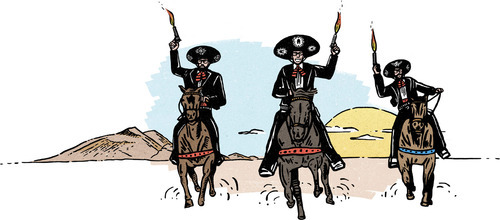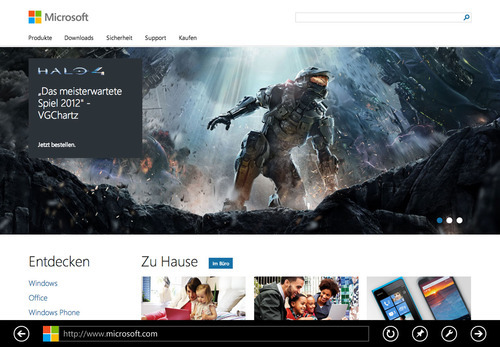
(We don’t want you mispronouncing in your head, so let’s start with a quick lesson: Pair-Uh-Vel. Pairuhvel. Paravel. Carry it with you.)
Before there was Paravel, there was Wimpkiller.
Developer Dave Rupert co-founded the paper ‘zine in the late ’90s, naming it after a t-shirt he scored at Value Village. “Branding at its best,” he joked.
As reams of 20th-century paper went pixel, so went Wimpkiller. Rupert, who runs Austin-based design shop Paravel with designer Reagan Ray and founder Trent Walton, turned the ‘zine into a blog into a blog network into a strange and happy hybrid that kept his friends connected and amused through the roaming years of their 20s.
The site’s growth followed Rupert’s interests. After identifying Wimpkiller’s next iteration, he figured out how to make it happen. “I learned the ropes of web development there … . I learned a lot about building a website, a community, and managing a long term project,” he told Dribbble.
When Rupert moved to Japan to teach English, Wimpkiller allowed Walton to keep a bead on him. Walton had paid Rupert a bargain-basement, one-time fee of $85 to teach him “to do what he does.”
"We just kind of hacked it out long distance," Rupert remembered. "Our working relationship’s really similar now." The guys work from home and convene on Campfire, for lunch and weekly meetings, at family birthday parties, and for ATX Dribbble meetups, which they started in 2011. Last month’s meetup, during SXSW, attracted more than 400 attendees.
Consciously or through shared intuition, the trio’s working style echoes the Wimpkiller Model: make what you love and learn as you go. In upending the traditional order, in which skills are acquired and projects chosen based on skill set, Paravel has pursued a slew of well-heralded clientless-projects.* The unpaid work not only resulted in new open source products (FitText, FitVids), but also attracted a national following and a marquee client: Microsoft.

The three amigos, as the guys call themselves, started sharing orbits in high school, round about 1998. Ray dated a girl in Rupert’s crowd. Rupert toilet-papered Walton’s house when Walton skipped a fireworks outing. Walton road-tripped from Stephen F. Austin State U. in Nacogdoches to UT Austin, where Rupert and Ray roomed together. They shared a goofball sensibility, a proclivity to tinkering, and an eye for visual cool.
After college, Ray and friends founded an ad firm, which earned a few years’ rent plus chicken wings. (Pluckers Wing Bar paid half its fee in Pluckers Bucks.) After Rupert returned from Japan, he and Ray worked for a Phoenix real estate company while hovering on the edge of a plummeting market.
"It didn’t end well," Rupert said. They got let go, but also, they learned. "You get hacked by some kids in Russia or Iraq. Everything bad happens that can happen. … I learned all these hard lessons and it turned me into the de facto developer of our group," Rupert said.
Walton was learning his own web-centric lessons at a family of industrial companies. “Every couple months, I built a website,” he recalled. “Every time I would get better and better.” He often looked to designer and Dribbble co-founder Dan Cederholm, whose SimpleBits was gaining attention for its work with Fast Company and such clients as ESPN and Odeo.
"I was basically ripping off everything SimpleBits had ever done," Walton joked.
After Walton finished designing the companies’ sites, his employer had nothing but paper for him to tend. The fun of the job was the web; Walton went freelance and, admittedly without much thought, called himself Paravel, after C.S. Lewis’ Cair Paravel, home to Narnian royalty.
Most good company yarns feature a crucial moment, marked by exquisite circumstance, little funding and much risk. Walton hired Rupert, then Ray, both professionally flummoxed and ready to jump into his web castle Paravel. They lived from paycheck to paycheck and they took every job.
Early gigs offered few thrills, but as is becoming a golden thread through this narrative, the trio learned. After a hectic stretch of noses-to-the-grindstone, earn-earn-earn, the team wanted something new. Something born not of skill-set or earning potential, but of passion.
Now, and not what happened two paragraphs up, comes the risk: the bill-less hour, the client-less project, the goal-less goal, the self-motivated, self-interested push towards a What lacking a clear How and How Much.
"We’re using 100 percent of our time to stay afloat," Walton remembered. "Let’s start doing things that we like. … If you want to change the shape of the web, even in a tiny, minuscule way, you don’t build what’s possible, you build whatever you can imagine, which forces you into a situation where you’ve got to invent things."
And so the amigos built good things they liked for nobody but themselves, figuring out the How as they went along. Their work style morphed.
"Our process used to be, I would come up with something in Photoshop and hand it off to Dave to code," Ray said. Now, "there’s not really a Point A, Point B, Point C. It’s Point B, Point A, Point C."
They worked together and they shared their work at ParavelInc.com and on Dribbble and the people did hire them, wowed by such projects as The Many Faces Of. (See “Paravel’s Side Projects” at the end for list of Paravel’s side work.) “Things like that led to the kind of work we wanted to do,” Ray said. “We started getting clients we enjoyed working on.”
Such as 10K Apart. Typofonderie. The Do Lectures. Lost World’s Fair. And Microsoft.

Walton describes the first Microsoft conference call last year, just before the company hired Paravel to design the 17th version of the company’s website.
"This is me sitting in Texas on the phone trying not to sound dumb. I was equal parts eager for Paravel to be part of the job and amazed that we were even talking to them about doing the work."
Walton may have felt in the dark, but a mighty spotlight shone down on him from Seattle, one highlighting his best features and aimed by web wizard Nishant Kothary, former Microsoft web strategist, cofounder of Minky, and Paravel evangelist.
Microsoft beta-launched IE9 back in 2010. To celebrate Web Open Font Format, Kothary commissioned designer Jason Santa Maria to create a series of font-astic posters called Lost World’s Fairs. Santa Maria brought in Walton, Walton brought in Rupert and Ray, the project pushed WOFF to its limits, and spawned Lettering.js.
Kothary was impressed and invited Paravel to collaborate with him on 10K Apart, a contest challenging entrants to create responsive web apps using no more than 10 kilobytes, and on the site for Microsoft’s Build 2012 conference. He then gunned for them to redesign Microsoft.com, making it responsive. The move would make Microsoft the first big tech company to ship a fully responsive homepage.
"The Microsoft.com redesign not only needed an agency that lived on the bleeding edge of web development for the multi-device world, but one that was willing to collaborate in the true sense of the word," Kothary told Dribbble. "Thanks to my repeated collaborations with Paravel, I was so certain that the three amigos fit the bill that I didn’t even provide the Microsoft.com team with a backup recommendation."
From the outside looking in, the match-up appears to be that of David hired by Goliath to move man-sized boulders: different strengths, different approaches, different cultures. But Microsoft heralded a new forward focus with the launch of Windows 8 in 2012 and the introduction of an efficient, RWD-friendly design language (formerly known as Metro).
Redmond was ready for Austin. Microsoft was ripe for Paravel. The three Texans could feel it when they arrived in Redmond.
"When we landed, their dev team, their engineering team, they were just ecstatic," Rupert remembered. "They were ready to work hard and fast and build this, a nice product to show off the changes that are happening within Microsoft." Plus, he added, while Microsoft was the expert on Microsoft, Paravel was the expert on RWD.
"We do RWD. That’s what they wanted. We have a clean, minimalist style and that fit with their Windows style design. We’re a three-man shop, so we are able to work fast and make decisions fast on our end, which helped them get to deciding points faster."
That said, the three-man shop did make adjustments and surmount hurdles. Ray talked about shifting his view of the typical client interaction, where design teams work with one client contact. “This was more collaborative,” he said. “There were a lot of meetings, talking with various members of their team about what we wanted to do.” Walton discussed the increased design considerations when addressing multiple versions in many languages, some reading right-to-left, others left to right.
All three Paravellians bragged on their Microsoft cohorts: They possessed top-notch skills, a progressive and collaborative mentality, the ability to quickly grasp what needed to be done, and a deep understanding of the needs of its audiences — 98 worldwide. Walton admitted to growing verklempt on that final Microsoft phone call.
When the critics saw the design, they grew a little emotional, too.
"As far as corporate homepages go, this one is aces."
—Alex Wilhelm, The Next Web
"If a designer is looking to convince a client to go with a state-of-the-art site design, they can now point in a surprising direction — to Microsoft."
—Anthony Wing Koser, Forbes
"Really nice design work."
—John Gruber, Daring Fireball
"It’s no Wimpkiller, but it’ll do."
—Susanna Baird, Gotcha

The next obvious place to go with this article is Next. What’s Next for Paravel, now that they’ve scaled Microsoft?
For starters, How and Who Next remains the same for the foreseeable future.
"We’re not hiring," said Rupert. "We enjoy being a three-person team. We work and it works and so far it’s worked and so why would we change it?"
The What remains to be seen; it’s on the three amigos collective mind, but in a musing, thoughtful, low-stress way. They enjoy client work, they enjoy their side projects, and while they’ve talked products, like everything else with these guys, those products need to be born of a passionate idea which, at present, remains to be thunk. Perhaps it’s the lack of sleep.
"We have this continuous office pregnancy," Ray joked. "Jill and I had our baby [#1, 8-month-old Mary] and then Trent and Bonnie were pregnant [with Charlie, 3 months; Walton also has Henry, 2], and now Dave and his wife Jessie. Up until August, we’re going to have a year-and-a-half of continuous pregnancy."
Whatever they do next, they’ll be doing it from Austin. The three amigos love their hometown, each singing its praises according to his own style. Walton’s Austin is “a pretty laid-back place.”
Ray seconds the laid-back. “We were one of the first [places] to have a Dribbble meetup, and it’s always been — it’s a bar and we’re going to get together and hang out. … There’s a lot of neat stuff that inspires me.”
Channeling Jeff Spicoli, Rupert concurs.
"We have a low tolerance for bullshit. We’re all groove-dogs. We’re kind of a hippie culture at our roots.
"I think another factor is the heat … the 100 degrees. That’ll cook the douchebag right outta you."
Neat, laid-back, inspiring, groove-dogging, without a touch of douche-baggery, Austin sounds a lot like the three amigos. And as they love their Austin, so too their Austin loves them. Phil Coffman, creative director at Element, describes the spot Paravel holds in the community.
"Paravel symbolizes the kind of company and success story that Austin loves: a small group of unpretentious locals doing the work they love and giving back to the community while doing it.
"The Austin design scene looks to them as leaders."
—-
Paravel’s Side Projects
The Accessibility Project
Rupert helped launched the project, a community-drive effort to make web accessibility easier for front-end developers to implement. We want to make the web a better place, and make it simple.
ATX Web Show
Podcast about the Austin web community. Rupert: “This is near and dear to my heart. I love my city and I want it to be famous.”
Austin Town Hall
Indie music news from Austin. Ray: “It grew out of my relationship with my brother [Ryan Ray]. I was collaborating with him to create some kind of outlet to talk about music. … It was one of the first side projects, but also one of the first sites we worked on at all. It was great to … get something out there that was more of our personality.”
The Greatest Movies of All Time
Screen-printed in Ray’s garage, the poster is based on the American Film Institute’s “Top 100” list (2007 version).
Heroes of Texas
Posters by Texas designers commemorating the Texas Revolution, curated by Ray: “I wanted to make these posters. As I started working on them, I started thinking about how some of my colleagues would make them. I started asking them to do it.”
Littlefield
Ray: “Dave and I were making this fake movie. We were freshmen in college. Dave took Powerpoint and actually figured out how to make a movie trailer. It was all images and text animating. It was really hilarious. It was us breaking into a girls’ dorm.” Sundance calls, gentlemen!
Many Faces Of
Site commemorating the amigos’ love of the silver screen. Walton: “It’s one thing to read about a new technique and it’s an entirely different thing to launch anything, it doesn’t matter what it is. The Many Faces Of, we all love movies, particularly ’80s movies. Back then there was something delightful and amazing because of all the new CSS3 properties and web fonts … There’s something to be said for, build it and we’ll see what happens.”
ShopTalk Show
Live web podcast with Rupert and Chris Coyier. Rupert: “It’s just a sound effects podcast that also covers web design. … Most of the show is actually taking questions from people. You’re getting a chance to hearwhat people are struggling with and what people are interested in. I also enjoy hanging out.”
Signs of Austin
Ray’s illustrations of vintage signs. “ ustin has all these really cool neon, these old signs with all the lightbulbs in them from the ’50s and ’60s. All of these signs are slowly starting to disappear. I’ve been thinking about what Austin used to be.”
Wimpkiller
From paper ‘zine to blog to multi-blog platform to chat group to social network, Wimpkiller kept the amigos together. Rupert: “That blog was in my 20s, but all my friends in my 30s, all my closest, dearest friends, are byproducts of this. The site’s now defunct, but it’s kind of this testament of how this website brought us together.”
Find more Updates stories on our blog Courtside. Have a suggestion? Contact stories@dribbble.com.







